Midweek Review
Sordid politics of environment and big money
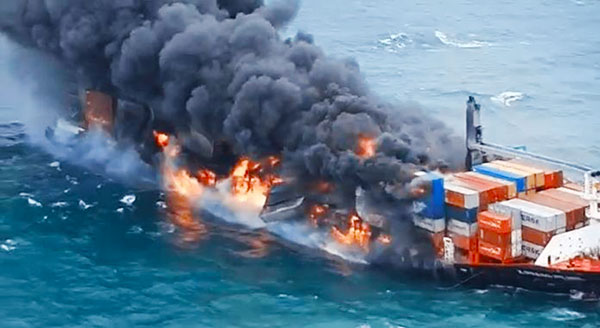
Those genuinely keen on protecting the environment should without further delay launch a project to protect rain forests. The ongoing power cuts have underscored Sri Lanka’s dependence on hydropower. The continuing destruction of forest cover can cause irreparable damage to the country’s hydro power generation capacity, thereby causing a catastrophic situation. Perhaps the CEJ and the likeminded groups should exploit the current situation to pressure political parties, whoever in power, to take environment protection seriously or face the consequences. The bottom line is that the country cannot replace hydropower generation capacity with thermal, including coal, in the foreseeable future. Therefore, every endeavour should be made to protect the existing hydropower capacity.
By Shamindra Ferdinando
Some of those activists at the round-the-clock ‘Go Gota Home’ protest, outside the Presidential Secretariat, at Galle Face, carried placards querying the delay on the part of the government to compensate the communities affected by the sinking of the Singapore registered cargo vessel MV X-Press Pearl, off the Western coast, last year.
The Express Feeders’ owned fire stricken cargo ship, sank on June 02, 2021, during an attempt to tow it away to deep seas. Sri Lanka lacked the wherewithal to bring the fire on deck, that had been reported on May 21, under control. In spite of firefighting support provided by India and other foreign vessels, the vessel went down, causing the worst ever ecological disaster in busy local waters, outside the Colombo harbour.
MV X-Press Pearl sank 9.5 nautical miles, NorthWest of the Colombo port, the day after President Gotabaya Rajapaksa directed that it be towed to deeper seas. The vessel went down where it had been since May 19 after entering Sri Lankan waters.
Controversy surrounds the way the relevant authorities probed the circumstances that led to MV X-Press Pearl stealthily carrying a leaking container, loaded with nitric acid, being allowed to enter Sri Lankan waters. The public have a right to know how the government dealt with the vessel’s local Agent, Presidential Award winner Sea Consortium Lanka of Setmil Group, accused of suppressing information about the acid leak.
The highly politically motivated ‘Go Gota Home’ campaign appeared to have attracted many groups, including those handling contentious environmental issues, which may have contributed to the overall deterioration of public confidence in the government. The handling of the X-Press disaster is a glaring example of an utterly corrupt system that protected the affluent at the expense of the hapless public.
The massive eruption of public anger against President Gotabaya Rajapaksa, at the approach to his private residence, at Pangiriwatte Road, Mirihana, on the night of March 31, marked a new phase in politics. Having caused chaos at Pangiriwatte, the ‘Go Gota Home’ campaign, overnight, targeted selected government members. Violent protests in several districts, particularly in the Anuradhapura district, underscored the growing public anger at those wielding political power.
At the same time while we do not wish to be paranoid conspiracy theorists, it must be noted that some of the present protests appear to be well coordinated and funded and quite possibly maneuvered by a hidden hand, as happened in the run up to the change of government in 2015, engineered by the US, about which it later crowed about publicly through its then Secretary of State, John Kerry. Though President Gotabaya is responsible for some controversial decisions taken hastily, like the abrupt decision to ban agrochemical imports or doing away with some key taxes no sooner he was elected, it must be stated that none of it was done for his personal benefit, but there has been far too many built up coincidences in the run up to the present conflagration, like the MT New Diamond sinking, X-Press Pearl disaster of epic proportion, the wrong composition of butane and propane in LPG shipped to Sri Lanka that caused needless explosions and even loss of life, etc. In the light of what has happened recently in Pakistan, and elsewhere, we believe the country needs to be extra alert to such foreign engineered plots.
The high profile campaign discarded all political parties, represented in Parliament, thereby denying the Opposition an opportunity to exploit unexpected political developments. The protest campaign that had been launched, opposite the Presidential Secretariat, on April 09, received the backing of many groups with diverse objectives. Among the interested parties were civil society organisations, including the Centre for Environmental Justice (CEJ) spearheading an intense legal campaign against the current dispensation.
The CEJ moved court over the X-Press Pearl disaster, in the absence of a genuine effort by relevant government machinery to obtain proper compensation. If those responsible for taking action had addressed the issue purposefully, the sinking of X-Press Pearl wouldn’t have been an issue at the ‘Go Gota Home’ campaign.
It would be pertinent to examine the issues at hand against the backdrop of those seeking compensation for MV X-Press Pearl disaster being part of the ‘Go Gota Home’ campaign. The current crisis has erupted at an opportune time as cash-strapped Sri Lanka struggles to meet the basic requirements of the public.
The ship disaster, off the Western coast, cannot be discussed without taking into consideration the massive fire onboard MT New Diamond, off the Sangamankanda coast in the East, in early Sept 2020.
The Committee on Public Enterprises (COPE) proceedings and an exclusive interview Sirasa anchor Asoka Dias, formerly of Upali Newspapers did with the first Dean of the Faculty of Fisheries and Marine Sciences and Technology, Ruhuna University, Prof. Ruchira Cumaranatunga exposed the Marine Environment Protection Authority (MEPA).
MEPA and legal system exposed
COPE Chief and MP Prof. Charitha Herath recently lambasted the MEPA, at a recent committee hearing, over the handling of the fire onboard crude carrier MT New Diamond in early Sept. 2020 and the sinking of X-Press Pearl carrying chemicals off the Port of Colombo last year.
Prof. Herath questioned MEPA Chairperson Attorney-at-Law Dharshani Lahandapura, a Viyathmaga activist, as regards their response to the disastrous accidents.
The SLPP National List MP demanded to know why compensation hadn’t been so far secured from the owners of the MT New Diamond. His query was based on the Auditor General’s observations. Jagath Gunasekera, the Acting General Manager of MEPA, said that the court had decided on the fines to be imposed.
Prof. Herath asked why only Rs 51 mn out of estimated Rs 3,480 million, due from MT New Diamond as compensation, had been received. Attorney-at-Law Lahandapura said that though there had been an oil patch, the fire had not caused any environmental damage.
Prof. Herath asked why such a huge estimate in respect of damages had been made if no disaster had occurred. Gunasekera said Rs 51 million had been paid for firefighting operations and related matters.
According to Gunasekera an expert panel had recommended Rs 3,480 mn compensation and the relevant file had been submitted to the Attorney General’s Department.
Prof. Herath pointed out that the AG hadn’t responded to the MEPA so far, and asked what the MEPA would say if the COPE alleged that it had collaborated with the ship owners to help them reduce compensation payments for environmental damages caused.
When the COPE Chief questioned the role of MEPA’s Legal Officer in respect of the overall response, the MEPA representative at the hearing disclosed that she had been sidelined. The official revealed she hadn’t been allowed to participate in any of the discussions with the Attorney General’s Department on civil or criminal proceedings. Prof. Herath demanded to know why she had been sidelined. Lahandapura claimed that MEPA had assigned responsibilities to another official as the Legal Officer was not responsive to the MEPA’s requirements. Prof. Herath dismissed that claim, insisting that there couldn’t be a justifiable excuse for sidelining the legal officer.
Prof. Herath emphasised that the revelation that the MT New Diamond matter issue had been handled outside the purview of the MEPA Legal Section was a serious matter.
Prof. Herath pointed out that though the compensation in respect of X-Press Pearl had been estimated at USD 37 mn, the ship owners had agreed to pay only USD 2.9 mn. Lahandapura admitted that an organisation that had represented the ship owners/insurers had provided advice to MEPA, too. The COPE Chairman pointed out that the organisation concerned would have been able to manipulate the whole process to the advantage of the ship owners/insurers. The MP said that someone could easily level the charge that the MEPA collaborated with them to reduce the amount of compensation received by the country.
Sirasa interview
 Prof. Cumaranatunga didn’t mince her words when she questioned the conduct of MEPA Chairperson as regards the two incidents – the one off the Sangamankanda coast and the other off the Colombo harbour. Responding to interviewer Dias, the academic, who investigated both high profile cases, accused Lahandapura of suppressing some sections of the report on MT New Diamond submitted by her team. She pointed out how the MEPA Chief claimed before the COPE that damages hadn’t been caused to marine life, contrary to the report submitted by the experts. An irate Prof. Cumaranatunga declared that MEPA Chief had insulted members of her team by propagating blatant lies. Asoka Dias couldn’t have conducted that interview at a better time. With the growing public protests, demanding a system change, the operation at the MEPA explains how interested parties pursued projects beneficial to them, regardless of the consequences. Prof. Herath should ask Prof. Cumaranatunga to make her position clear before his Committee and take whatever necessary action. The government cannot remain silent against the backdrop of the head of the expert team that probed the ship disasters, exposing MEPA.
Prof. Cumaranatunga didn’t mince her words when she questioned the conduct of MEPA Chairperson as regards the two incidents – the one off the Sangamankanda coast and the other off the Colombo harbour. Responding to interviewer Dias, the academic, who investigated both high profile cases, accused Lahandapura of suppressing some sections of the report on MT New Diamond submitted by her team. She pointed out how the MEPA Chief claimed before the COPE that damages hadn’t been caused to marine life, contrary to the report submitted by the experts. An irate Prof. Cumaranatunga declared that MEPA Chief had insulted members of her team by propagating blatant lies. Asoka Dias couldn’t have conducted that interview at a better time. With the growing public protests, demanding a system change, the operation at the MEPA explains how interested parties pursued projects beneficial to them, regardless of the consequences. Prof. Herath should ask Prof. Cumaranatunga to make her position clear before his Committee and take whatever necessary action. The government cannot remain silent against the backdrop of the head of the expert team that probed the ship disasters, exposing MEPA.
Prof. Cumaranatunga revealed how she raised the issues at hand with Lahandapura soon after the COPE rapped MEPA over the controversial handling of the ship disasters. Declaring that Lahandapura’s response to her queries hadn’t been satisfactory, the academic exposed how MEPA manipulated the online process adopted in preparing the final report to secure the signatures of the members of the probe team without providing them the final draft.
The COPE and Sirasa revelations haven’t received sufficient public attention. The ruling coalition and the Opposition haven’t acted on sensational revelations made by the COPE as well as two other watchdog committees, namely the Committee on Public Accounts (COPA) and the Committee on Public Finance (COPF). MEPA should be held accountable for mishandling of two key investigations. Had they been deliberately handling the issues in a way to deprive the country adequate compensation?
Prof. Herath is in no mood to give up his strong stand in respect of the two
muddled investigations. The COPE should pursue this matter. The X-Press Pearl matter is now before the judiciary. It would be the responsibility of all concerned to ensure transparent proceedings. Punitive measures are a prerequisite for justifiable settlement of the X-Press Pearl case.
CEJ moves court
The CEJ and three others, including its Senior Advisor Hemantha Withanage, in a fundamental rights application filed in terms of Articles 17 and 126 of the Constitution, in respect of the X-Press Pearl affair, has named its owner Express Feeders and its local agent Sea Consortium Lanka as 11th and 12th respondents, respectively. They are among 13 respondents, including the Attorney General.
At the time the CEJ moved SC against what the petition called the worst marine ecological disaster caused by the sinking of X-Press Pearl, the outfit hadn’t been aware of the local agent deleting e-mails received from the Captain of the ship.
According to the petition, in addition to 325 metric tonnes of bunker oil, the vessel carried altogether 1,486 containers – 25 tonnes of hazardous nitric acid, caustic soda, sodium methylate, plastic, lead ingots, lubricant oil, quick lime and highly reactive and inflammable chemicals such as Sodium Methoxide, High Density Polyethylene (HDPE), Low Density Polyethylene (LDPE) “Lotrene”, Vinyl Acetate, Methanol, bright yellow sulphur, urea, cosmetics, etc.
Petitioners stated that the Captain and the crew members of the MV X-Press Pearl knew of the nitric acid leak from about 11th May 2021, nine days before the blaze started and had deliberately failed to inform the Sri Lankan authorities of the impending grave risk. But, the CEJ had been in the dark regarding the treacherous actions of the local agent and the whole issue would take an unexpected turn against the backdrop of Prof. Cumaranatunga’s revelations.
The CEJ receives funding from both local and foreign sources, including the UN. Responding to The Island queries, Withanage explained the gradual growth of CEJ’s operations since its launch in 2004 following the breakup of the Environmental Foundation Ltd. Assuring transparency in the CEJ’s operations, Withanage alleged that the state agencies that had been tasked to protect the environment either connived brazenly with some of the corrupt elements who wielded political power regardless of the consequences or betrayed the country’s interest for personal gain. The sordid disclosures made during COPE proceedings and the Sirasa interview as regards the sordid behaviour of MEPA, responsible for the protection of marine environment should prompt the government to take tangible measures.
Unfortunately, MEPA as well as other agencies answerable for matters concerning the environment, are pursuing strategies acceptable to their political masters.
The much discussed court cases pertaining to clearing of Wilpattu jungles, releasing of elephants and the threat to Sinharaja forest exposed the corrupt political party system.
Withanage asserted that political parties exploited corrupt systems in place to raise funds. If those who exercised political authority addressed matters of serious concern there wouldn’t have been a need for CEJ to move the Supreme Court over the X-Press Pearl disaster. Withanage questioned the conduct of the premier government agency, the Central Environmental Authority (CEA) now headed by ex-JVPer Siripala Amarasinghe. Withanage asserted that politicians and officials were equally responsible for the pathetic state of affairs.
There cannot be a better example than the importing of toxic garbage containers from the UK and simply dumping them here during the yahapalana administration. While Amarasinghe and then President and former Environment Minister Sirisena claimed at the time they were tackling the issue expeditiously, if not for the CEJ successfully moving the court, the British garbage would have been here still. Having blamed the Mahinda Rajapaksa tenure for large-scale environmental destruction, Withanage alleged that the current dispensation was the worst. The civil society activist cited the removal of restrictions on the mining and the transport of sand as one of the evil decisions taken by the current government. The move was obviously meant to allow those connected with the party to make money. The relevant authorities fully cooperated with politicians, Withanage alleged.
The court was told between 2017 and 2019, the UK shipped 263 containers of waste to Sri Lanka. The containers were labelled ‘used mattresses, carpets and rugs.’ But, amongst other things, authorities found bio waste from hospitals. It included radioactive clinical waste, rags, bandages and body parts from mortuaries. Thanks to CEJ’s action, the entire lot – altogether 263 containers – were shipped back by February 2021. It would be pertinent to examine the conduct of the environment ministry and the CEA with regard to the import of British waste. Contrary to expectations, the current dispensation didn’t take punitive measures against those responsible for the importing of dangerous cargo and kept them in specified areas pending disposal.
The government should be ashamed of its failure. The Parliament, too, should inquire into such glaring failures. Can those in authority now and then vouch that foreign waste didn’t end up at Aruwakkalu sanitary garbage dump in Puttalam as once alleged by top environmental scientist Dr. Ajantha Perera in an interview with this newspaper?
One-time top trade official Gomi Senadhira recently discussed how in spite of Sri Lanka’s success in sending back over 3,000 tons of British toxic waste, authorities allowed foreign garbage. Senadhira asked whether the Customs, Trade Ministry, the BOI, and the CEA deceived the public on garbage imports.
Senadhira raised two basic issues (verbatim) (a) How did the Customs detect the 3000 tonnes of “illegally imported foreign garbage”? Wasn’t it only when the containers that remained in the port for months without being cleared by the importer started to stink and leak? When were the tonnes of customs-cleared garbage in a clandestine garbage dump created inside the BOI discovered by the BOI and the CEA?
Wasn’t it only after a media exposure? Didn’t all this happen after the implosion of the Meethotamulla garbage dump? Coincidence? Maybe. Maybe not. Methotamulla collapsed at the start of the yahapalana regime.
(b).During the four-year period 2017-2020, while struggling to ship back 3,000 tons of illegally imported stinking waste, the customs and the CEA had facilitated “legal” imports of a much larger quantity of garbage into the country. For example; Sri Lanka imported nearly 20,000 tonnes of plastic waste (HS391590) In addition, nearly 1000 MTs of plastic waste under HS 391530 was also imported every year.
Most of it, according to customs data, was imported from China. As far as I am aware, China does not export plastic waste”
Perhaps, the CEJ should speak with Senadhira to map out proper strategy to counter clandestine projects. Interested parties must have profited immensely at Sri Lanka’s expense.
Midweek Review
Impact of US policy shift on Sri Lanka
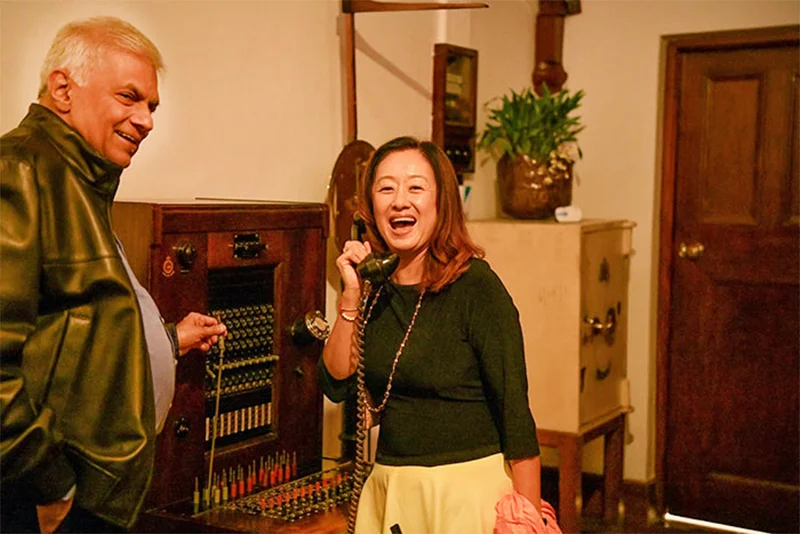
President Trump has unceremoniously overturned US foreign policy. His decision to deport illegal Indian migrants just ahead of a summit with Premier Narendra Modi, underscored the tough stance taken by the new US admiration. The much-touted US-India strategic partnership didn’t deter Trump from carrying out the much-publicized humiliating deportations of Indians. US Vice President J.D. Vance’s speech at the Munich Security Conference, recently, indicated that Trump has terminated his special relationship with Europe and is charting his own course. The upcoming Trump and Russian leader Putin’s meeting stressed that the US policy wouldn’t be shaped by European concerns over Russia. Against that background, the US is very much unlikely to pursue the Biden policy as regards bankrupt Sri Lanka. Actually, Sri Lanka’s political leadership will have to do some serious thinking and re-examining our position as Trump redraws US foreign policy.
By Shamindra Ferdinando
Since the successful conclusion of the war in mid-May 2009, despite all the naysayers, and even the likes of the then British Foreign Secretary David Milliband and French Foreign Minister Bernard Kouchner, rushing here at the eleventh hour with the hope of getting President Mahinda Rajapaksa to halt the offensive to enable them to evacuate the LTTE supremo, his family and their surviving fanatical terrorist band to safety abroad, the US appointed five Ambassadors to Colombo. Of them four were women, namely Patricia A. Butenis, Michele J. Sison, Alaina B. Teplitz and incumbent Julie J. Chung. Between the tenures of Sison and Teplitz, the only male Atul Keshap, of Indian origin, served here for a period of four years (Aug. 2015-July 2018) during the Yahapalana administration.
Ambassador Chung oversaw President Gotabaya Rajapaksa’s forced ouster in 2022. In spite of her denial, Amb. Chung’s role in President Rajapaksa’s removal is clear and cannot be disputed. Amb. Chung will soon be replaced by Elizabeth Kathryn Horst, currently the Principal Deputy Assistant Secretary and Deputy Assistant Secretary responsible for Pakistan, yet another country in which Washington is mired in regime change operations in the region.
Amb. Chung presented her credentials on Feb. 25, 2022, to President Rajapaksa, at the Janadhipathi Mandiraya. The President was flanked by State Foreign Minister Tharaka Balasuriya and Presidential Secretary Gamini Senarath. The new US envoy took office close on the heels of a major crisis within the government that compelled the President to ask for his Secretary Dr. P.B. Jayasundera’s resignation. Just five weeks after Amb. Chung took over the mission, the ‘GotaGoHome’ campaign got underway and a President, elected with over 6.9 mn votes on the SLPP ticket, was thrown out of office within four and half months by violent mobs armed with meticulous intelligence as to which politicians’ houses were to be ransacked and torched, along with those of their close supporters in a matter of a few hours, especially on May 09, 2022. Exactly two months later they completed their despicable mission by storming the Presidential palace.
The SLPP, both in and outside Parliament, accused Amb. Chung of staging the ouster of President Gotabaya Rajapaksa. Award-winning author Sena Thoradeniya (Galle Face Protest: System Change or Anarchy) and (Nine: The Hidden Story) by National Freedom Front (NFF) leader Wimal Weerawansa, MP, dealt with Amb. Chung’s sordid involvement.
However, the writer believes that the whole exercise should be examined as another arrogant US intrusion rather than Amb. Chung’s private agenda. Her job was to do the bidding of Washington. Let me stress that the US made a serious but an abortive attempt to bring President Mahinda Rajapaksa’s reign to an end in 2010. Thanks to Wikileaks we know how the US used a UNP-led coalition, that included the wartime LTTE ally the Tamil National Alliance (TNA), and the JVP, to back retired General Sarath Fonseka at the presidential election. That gamble failed. The war-winning Army Chief ended up with egg on his face with an unforgettable thrashing from the overwhelming southern electorate.
Eyebrows were raised when the outgoing American envoy recently expressed her desire to meet Sri Lanka Podujana Peramuna (SLPP) leaders at the Nelum Mawatha party office as she never bothered to do so since her arrival in early 2022.
Contrary to speculation, the outgoing US Ambassador had sought a meeting about two weeks ago before the unprecedented public exposure about the USAID’s (United States Agency for International Agency) sinister operations here and worldwide in the wake of the new US administration deciding to curtail drastically its operations for being a white elephant as America itself is being confronted with a fast developing and yet to be fully fathomed economic crisis, which might even exceed the worldwide Great Depression that came with the 1929 stock market crash. On her arrival at Nelum Mawatha last Friday (14) Amb. Chung was received by SLPP General Secretary and Attorney-at-Law Prasad Kariyawasam. The SLPP delegation was led by its National Organizer Namal Rajapaksa and one of the three lawmakers in the current Parliament. Having accused her of being in the thick of the regime change, the SLPP’s readiness to meet Amb. Chung, too, is a mystery.
It would be pertinent to briefly explain the USAID’s global objectives as the vast majority wrongly believed the agency is meant for humanitarian work. It is definitely not a charity. Its main objective is to strengthen capabilities of US agents, or assets, at local and regional levels regardless of the status of Washington’s relationship with the targeted country.
These agents, or assets, are available for the US at any time as Washington desired. Pentagon, the State Department or even the Central Intelligence Agency (CIA) used its resources under whatever circumstances. If we closely examine the pattern of USAID operations, as well as other related organizations that had been active here over a period of time, even our legislature is within the sphere of their influence. In other words, they obviously have direct access to politicians and officials who wield power over key institutions. The private sector, too, became part of the US operation carefully expanded countrywide.
By the time Amb. Chung arrived here. US assets were in place at different levels ready to carry out directives. Those who pointed a finger at Amb. Chung never bothered to examine the background and comprehend the gradual build-up that allowed the gathering of all elements, under the social media fuelled ‘GotaGohome’ campaign.
The US mission here had done a tremendous amount of work, especially beginning with the Amb, Keshap’s time, to enhance the capacities of their existing assets and identify and develop new assets.
What really prompted Amb. Chung to suddenly seek a meeting with the SLPP? Did National List MP Namal Rajapaksa’s call for the setting up of a Parliamentary Select Committee (PSC) to probe USAID funding, influence her decision? But that cannot be as the US Embassy made the request before the USAID controversy. Perhaps, SLPP General Secretary Kariyawasam expressed concern over Amb. Chung’s frequent visits to the JVP headquarters at Pelawatte, whereas she ignored the SLPP.
Appearing on a live television programme, Kariyawasam pointed out that Amb. Chung had plenty of time for the JVP, a party with just three MPs, while the SLPP, in spite of being represented by 145 MPs, never received the US envoy’s attention.
Perhaps Amb. Chung didn’t really feel the requirement to visit Nelum Mawatha as she maintained a close contact with the SLPP founder Basil Rajapaksa.
Ambiguity over objectives
It would be pertinent to ask both the sponsors and recipients whether various foreign-funded projects achieved their objectives.
The following are some of the USAID-funded projects launched, beginning 2017: [1] USD 19 mn social cohesion and reconciliation project implemented by Global Communities (July 2018-Dec, 2023) [2] Analysis of social cohesion and reconciliation implemented by US Institute of Peace at a cost of USD 700,000 (Aug. 2018-Feb. 2024) [3] USD 15 mn project implemented by Chemonics International Inc. to strengthen the justice sector, including the Justice Ministry and Office of Attorney General (Sept. 2021-Sept. 2026) [4] USD 17 mn project carried out by National Democratic Institute, International Republican Institute and International Foundation for Electoral System in support of Parliament and other government institutions, including the Election Commission (June 2020 – June 2024) [5] USD 14 mn worth project in support of civil society meant to achieve good governance reforms and strengthen accountability. Implemented by Management Systems International (Feb. 2018-Aug. 2024) [6] USD 7.9 mn scheme to strengthen media implemented by International Research and Exchanges Board Inc. (Aug. 2017-April 2023) [7] SAFE Foundation implemented a programme at a cost of USD 3.9 mn aimed at combating human trafficking (Oct. 2021-Sept. 2026) [8] USD 1.6 mn project to enhance protection for those threatened by gender-based violence (Oct. 2021-Sept. 2026). Implementing agency Women-in-Need [9] USD 3.6 mn project for the benefit of plantation community implemented by Institute of Social Development (June 2022-June 2027) and [10] a staggering USD 19 mn project meant to strengthen the civil society by unnamed private agencies (Sept. 2022-August 2027).
Interestingly, high profile USAID operations implemented in collaboration with successive governemnts covered the Justice sector (Justice Ministry and Office of Attorney General), Parliament as well as the Election Commission.
Over the years USAID with a massive budget that even exceeded the CIA’s and allied organizations have built up a system that served the interests of the US. That is the truth. Sri Lanka has cooperated not only with the US but other organizations, such as the UNDP, to allow them influence in Parliament. The USAID and UNDP have ‘secured’ Parliament by lavishly spending funds on various projects. In spite of spending millions in USD with the 2016 agreement between Parliament and USAID being the single largest project, what they have achieved here is nothing but a mystery.
Successive governments have encouraged USAID, UNDP and other interventions. They felt happy as external sources provided the funding. Let me give an example of how the UNDP stepped-in for want of sufficient public funding for vital government initiatives. Sometimes, they advanced their political project in the guise of helping the government of the day.
On May 13, 2021, the then Attorney General Dappula de Livera, PC, opened the USAID funded state-of-the-training facility that included a boardroom, auditorium, computer laboratory, and other facilities. The outspoken AG also launched an electronic system to track cases and legal files. The launch of the training facility, electronic diary and file management system, and the Attorney General’s Department website were also attended by Supreme Court Judge Justice Yasantha Kodagoda P.C., Acting Solicitor General Sanjay Rajaratnam P.C., the Secretary of the Ministry of Justice M.M.P.K. Mayadunne, and virtually by DCM Kelly and USAID Mission Director Reed Aeschliman.
The US Embassy, in a statement issued on that quoted AG Livera as having said: “This is another first in the 136-year history of the Attorney General’s Department. The opening of the training centre is a notable, salutary achievement that meets a long-felt need for continuous learning and professional development.” The AG was further quoted as having said these new tools would “drive the institution from strength to strength.”
If such facilities were so important why on earth the Attorney General’s Department failed to take tangible measures to meet that particular requirement.
Those who demand investigations into USAID must realize that their role is much more complicated than alleged and reported in some sections of the media. Among the beneficiaries were the Sri Lanka Judges’ Institute.
American Corner in Jaffna
The US Embassy established an American Corner in Jaffna with the collaboration of Jaffna Social Action Centre (JSAC), an NGO that particularly promoted women and children rights. Formed in 2003 in the North as the Liberation Tigers of Tamil Eelam (LTTE) was preparing to launch Eelam War IV, JSAC, over the years, developed into a recipient of US funding. JSAC is among the groups promoting LGBTQ in the Northern and Eastern Provinces. JSAC annually participates in the much-touted 16 Days of Activism Against Gender Based Violence campaign. The then US Ambassador Butenis attended the opening of the American Corner. JSAC, in its website, has revealed an impressive list of partners and donors.
Perhaps JSAC should explain how it served the interests of ordinary people, especially during the 2003-2009 period when the LTTE stepped up forcible recruitment of children, including girls. Forced conscription continued unabated as the military slowly but steadily rolled back the LTTE fighting formations, towards the east coast, until they were trapped in a sliver of land in the Mullaitivu district.
Sri Lanka should be grateful for US assistance over the past decades. The ordinary people benefited from such help but later Washington weaponized the setup as various interested parties queued up to secure lucrative contracts.
Amb, Chung, in late Sept. 2022, moved the American Centre in Colombo, that had been in existence for over seven decades, to the new US Embassy building. This was a couple of months after Aragalaya (March – July 2022) forced Gotabaya Rajapaksa out of office. The American Centre in Colombo had been first located at the Millers Building in Colombo, then at Galle Face Court, followed by Flower Road, before moving to the Sri Ramya at 44, Galle Road.
The American Corner in Kandy was established in 2004. In addition to Jaffna, Colombo and Kandy, there are similar facilities in Matara and Batticaloa.
The recent declaration by Bharatiya Janata Party MP Nishikant Dubey, in the Indian Parliament, that the USAID had been funding organisations with a view to creating unrest cannot be ignored. The BJP’s declaration underscored the gravity of the situation. Those who discarded repeated accusations by National Freedom Front (NFF) leader Wimal Weerawansa as regards US interventions here must take a fresh look at the developments taking place since Donald Trump’s return for a second term.
Dubey alleged the USAID funded organizations that carried out protests against the Agniveer initiative of the government, backed caste census, and supported Naxalism in India.
On behalf of the BJP, Dubey asked for a probe into whether Congress and the Gandhi family-controlled Rajiv Gandhi Foundation had received USAID funds through George Soros’ Open Society Foundations (OSF) for conducting activities, including the campaign for a caste census and against the Agniveer scheme introduced by the government. The MP claimed OSF received ₹5,000 crores from USAID to “break up India”. He raised the issue during zero hour.
The BJP MP’s accusations seemed somewhat surprising as India, under Narendra Modi’s leadership, established close relations with Washington and is a member of the four-country Quad, comprising the US, Australia, Japan and India meant to counter Chinese expansion.
Why subvert India? Is the question in everybody’s mind? President Trump, during a joint press conference with Premier Modi, speculated about the possibility of USAID role in the Lok Sabha elections last year. Perhaps Trump is playing politics even at the expense of the US as he sought to dismantle USAID.
The Trump administration has imposed a global stop-work directive on USAID, suspending most aid initiatives, except for critical food relief programmes.
However, India, too, had been blamed for interfering in internal affairs of other countries. Recently Canada alleged that India intervened in its electoral process. Canada named China as the other offender. India has strongly refuted the Canadian allegation. It would be pertinent to mention that Canada had been playing politics with Sri Lanka for many years as major political parties sought to exploit the post-war developments for their advantage. New Delhi also accuses Canada of encouraging Khalistan separatists operating from there.
Canadian Parliament, in May 2022, unanimously declared that Sri Lanka perpetrated genocide in a bid to appease Canadian voters of Sri Lanka origin.
The expansion of the USAID project here should be examined against the backdrop of Geneva adopting a US accountability resolution, co-sponsored by the treacherous Sirisena-Wickremesinghe government in 2015. The US backed Sirisena’s candidature at the 2015 presidential election. That was in line with their overall strategy to end the Rajapaksas rule, perceived to be China-friendly. The US funded the 2015 UNP-led campaign that involved the TNA and JVP as well. A group of civil society groups, led by the National Movement for Social Justice (NMSJ), backed Sirisena’s candidature, who switched sides at the last moment having been in the Rajapaksas camp throughout his political career and it was done after having a hopper feed with them the previous night.
Having betrayed his own party in 2014, Sirisena has ended up politically irrelevant. That is the price the one-time SLFP General Secretary had to pay for switching sides for personal gain. The former President is most unlikely to get an opportunity to re-enter Parliament ever again.
The NPP will have to be cautious how it handles the situation against the backdrop of developing political and economic upheaval in Washington as we may have never seen hitherto. The way the new administration addressed much more complicated issues, such as the Russia-Ukraine war in a manner seriously inimical to the European powers and pullout from the Geneva-based UNHRC and WHO meant that Trump has already turned US foreign policy upside down.
Midweek Review
Revisiting Humanism in Education:
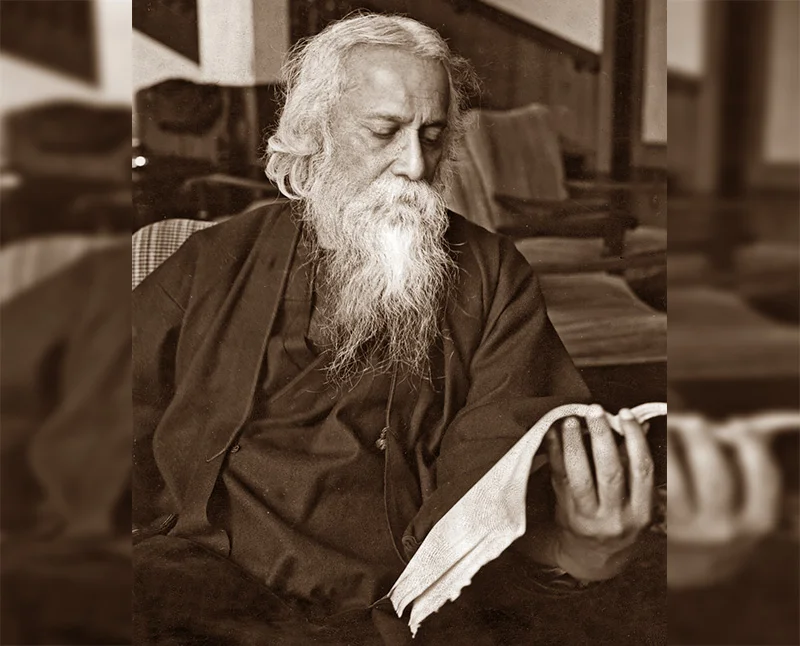
Insights from Tagore – III
by Panduka Karunanayake
Professor in the Department of Clinical Medicineand former Director, Staff Development Centre,
University of Colombo
The 34th J.E. Jayasuriya Memorial Lecture
14 February 2025
SLFI Auditorium, Colombo
(Continued from18 Feb.)
Tagore had an important answer to the question of whether the economic or the political should enjoy the primacy of place, in designing educational policy. He said: “Economic life covers the whole base of society, because its necessities are simplest and the most universal. Educational institutions, in order to obtain the fullness of truth, must have close association with this economic life.”
Sometimes I have difficulty understanding why Tagore, in spite of his appreciation of science and disdain for superstition, still lavishly exalted his traditional dieties and the scriptures. I think he did so because he saw a remarkable practical utility in them for the organisation of society and because they carried innumerable lessons for human conduct – for which science and technology, or even modern administration, had not yet furnished any suitable alternative.
Besides, it is clear that he admired religion’s potential to bring peoples together. In The Religion of Man, he wrote: “On the surface of our being we have the ever-changing phases of the individual self, but in the depth there dwells the Eternal Spirit of human unity beyond our direct knowledge.” But of course, religion seldom brought humanity together. And whenever it played the divisive role, he did not blindly follow its precepts.
The stickiest issue in India for the modern philosopher is probably its caste system, and Tagore had no qualms about repudiating it:
“…differentiation and separation of vocations and trades, professions and callings on which the caste system originally rested has become totally extinct and it is altogether impossible to maintain it any longer. Yet all the taboos, external restrictions and customs associated with the varna system are still in place, static and intact. It seems we must put up with the cage with all its iron bars and fetters though the bird for which it was made is dead and gone. We provide bird feed every day but no bird feeds on it. In this way, due to the cleavage between our social life and social customs, we are not only being inhibited and obstructed by unnecessary, outmoded arrangements, we cannot live up to our professed social ideals, either.”
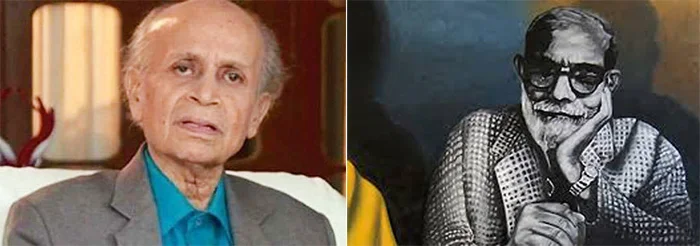
Prof. Carlo Fonseka / Dr. Abrahm T. Kovoor
I wish that for our country, we could replace the phrase ‘caste system’ with our own ‘outmoded arrangements’ – such as astrology, superstitious rituals and harmful so-called healing practices – and carefully re-read that quote. Sadly, our populace is filled with superstition, myth and pseudoscience – as a cursory glance at the supplements of any weekend Sinhala newspaper would show. Here, the high literacy rate actually works against the nation! Our public intellectuals must also take the blame, because they have failed to sustain the good work that had been done in the 1970s by intellectuals like Dr E.W. Adikaram, Abraham Kovoor and Professor Carlo Fonseka.
Another interesting point in his ideas is his desire to see education as a tool for everyone, not just the educated few. Reminding us on ancient Indian education and learning, he said:
“There was a regular traffic between specialised knowledge and ordinary knowledge. Scholars, pundits or learned society did not have an antithetical relationship with the less learned segments of society…There was hardly a place in the country where the Ramayana, the Mahabharata, the Puranic myths and religious discourse did not spread in a variety of ways. Even the theoretical philosophical issues which were rigorously, relentlessly discussed and debated in philosophy and metaphysics always filtered down to the mind of the people…In those days learning was the asset of the entire society and not the acquisition of the learned few.”
In our own country, in contrast, I wonder whether expanded access to education has had a similar effect. In spite of decades of education in swabhasha and wide access to education, knowledge is a tool of separation, seclusion and self-aggrandisement for the few who win the lottery. Is this the fault of the education or the educated? Perhaps both. The educated use their learning as a weapon rather than as a tool to serve, a manifestation of the fierce competitiveness and the fixed mindset that pervades the successful products of our education. At the same time, as Tagore pointed out, it is the fault of education too:
“The rains of our education are falling a long distance away from where the roots of our whole life lie…Our ordinary daily life has no use for the education we acquire…It is unjust to blame this on students. Their world of books and the world in which they live everyday are poles apart…That is why it is seen that the same person who has formidable erudition in European philosophy, science and ethics tenaciously clings to the age old superstitions…We are no more amazed when we see that on the one hand he is separately enjoying literature full of varied sentiments while on the other he is busy only with making money…”
These are a few fundamentals that can be gleaned from Tagore’s second phase. They aren’t many, and perhaps they aren’t as earth-shattering as one might expect. But I feel that they are exactly what we are lacking today and prevent education from playing a nation-building role. If we can get these right, we actually need to get very little else right.
Phase 3: ‘Freedom from bondage’
Tagore’s role and position as an unrepentant internationalist at the time when India was demanding swaraj is well known. He was opposed to nationalism, and in fact correctly identified colonialism itself as a manifestation of the nationalism of the British – so he asked, if one were anti-colonialist, how could one be nationalist also?
But his internationalism was not a rootless existence floating aimlessly in the air. He was clear that one must be rooted in one’s own soil, strongly and firmly – it is from here that one must reach out to the wealth of the world. In another beautiful simile, he urged us not to fear the wind, and to open the windows of our house to let that wind in. He would assure us that we would be able to retain the good that the wind blew in and get rid of the bad. He also said that as long as our house had a firm foundation, the wind will not blow it away. So for him, the first step of being an internationalist is studying one’s own soil and placing a firm foundation for one’s existence. He admired and studied tradition without being a traditionalist.
With regard to Indian universities of his day, he lamented the fact that these were European grafts and nothing like India’s ancient intellectual heritage, such as Nalanda, Wikramshila or Takshasila. He lamented the type of intellectual this would produce. He wrote in 1932:
“We receive European learning as something static and immutable and consider it the height of modernity to cull and recite sentences from it. For this reason we lack the courage to reconsider it or think about it from a new angle. Our universities have nothing to do with and are cut off from the acute questions, dire necessities and extreme hardship facing the people of the country…Like parasites our mind, attached to text books, has lost its ability to find its food and invent by itself.”
These words seem no less relevant to our own universities, 90 years after they were written.
Tagore’s belief in internationalism and its effect on his philosophy of education is captured by his description of Visva-Bharati, the higher education institute he set up in 1921 using the Nobel Prize money: “Visva-Bharati represents India where she has her wealth of mind which is for all. Visva-Bharati acknowledges India’s obligation to offer to others the hospitality of her best culture and India’s right to accept from others their best.”
Conclusion
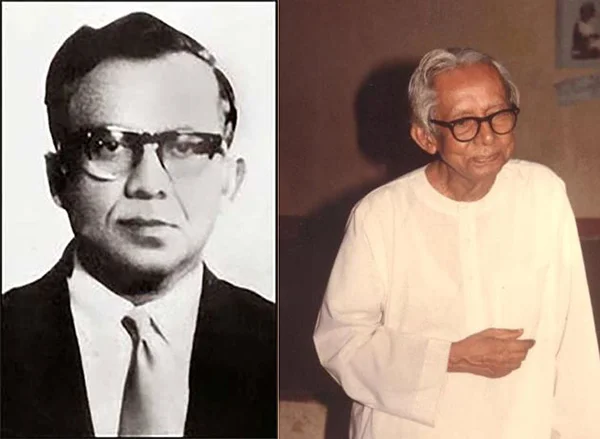
Prof. J. E. Jayasuriya / Dr. E. W. Adhikaram
Ladies and Gentlemen: I am afraid time would not permit me to cover the whole breadth of Rabindranath Tagore’s complete educational philosophy, and I wouldn’t even pretend to cover it in depth. For example, I didn’t touch on other important aspects that Tagore spoke of, such as school administration, advice for teachers, maintaining discipline without corporeal punishment, carrying out research and promoting creativity, women and education and so on. Forgive me for only scratching the surface. But the topic of Tagore’s educational philosophy is so vast that nothing wider would be possible in a short time.
You will also note that my talk was not filled with anecdotes of incidents and peculiarities at Santiniketan – like how classes were conducted under trees or how the gurudev once conducted a class in the rain for cattle when the students didn’t want to come out and get wet. These are not the timeless substance of the tale; they are only its time-sensitive ornaments.
If, on the other hand, I have been able to whet your appetite for his educational philosophy, and also convinced you that he had patiently worked on and presciently invented an antidote to today’s problems of education, I would be content for now. Balance was his antidote. My goal this evening was to place the seeds of his ideas in your minds, and hope that they will grow, be nourished and be pruned and manicured into a contextually appropriate shape in the months or years to come.
Selected bibliography
Dasgupta, U. (2013). Rabindranath Tagore: A Biography. Oxford University Press. (Translated by hiisß ckl l=udr- mßj¾;l (2024).rúkaøkd;a ;df.da¾-udkj ksoyi iy úúO;ajh kqf.af.dv iriú m%ldYlfhdaව)
Dore, R. (1976). The Diploma Disease: Education, Qualification and Development. London: George Allen & Unwin (republished in 1977 by Institute of Education, University of London).
Gunasekara, P. (2013). moaud .=Kfialr – kkaofiak .%duSh wOHdmk l%uh^1932-1939) lkakka.r;=udf.a wu;l l< fkdyels w;ayod ne,Sula fld<U iQßh m%ldYlfhda: කන්නunasekara, S.P. (2012). iuka mqIamd .=Kfialrම(2012). rúkaøkd;a ;df.da¾ fld<U tia f.dvf.aසහiyifydaorfhda(Basedon Rabindranath Tagore: The Myriad Minded Man (1995) by Krishna Dutta and Andrew Robinson, and other works.)
Illich, I. (1970). Deschooling Society. USA: Harper & Row (republished in 1973 by Penguin Education, Harmondsworth, England).
Iyengar, K.R.S. (1987). Rabindranath Tagore: A Critical Introduction. London: Oriental University Press.
Kripalani, K. (1961). Tagore: A Life. New Delhi: National Book Trust, India (author publication, republished in 1971 by National Book Trust, India).
Maithra, S., translator (2014). Education as Freedom: Tagore’s Paradigm. New Delhi: Niyogi Books.
Navaratnam, R. (1958). New Frontiers in East-West Philosophies of Education. Calcutta: Orient Longmans.
Neogy, A.K. (2010). Santiniketan and Sriniketan: The Twin Dreams of Rabindranath Tagore. New Delhi: National Book Trust, India.
Samuel Ravi, S. (2024). Philosophical and Sociological Bases of Education (2nd edn). Delhi: PHI Learning. (Chapter 13: ‘Rabindranath Tagore’, pp. 163-179.)
Sarathchandra, E.R. de S. (1942). ‘Through Santiniketan eyes’. Kesari People’s Weekly (Jaffna) serialised from 2(9) to 2(17) and compiled by Goonetileke, H.A.I., also available translated to Sinhala ^iqpß; .ï,;a-mßj¾;l ප(2001). ශYdka;s ksfla;kfha weiska fld<U tia f.dvf.a iy ifydaorfhda).
Venn, G. (1965). Man, education and work. In, Cosin, B.R., editor: Education: Structure and Society. Harmondsworth: Penguin Books. (Chapter 6, pp. 97-107.)
Venn, G. (1971). Preparation for further preparation (editorial). Educational Leadership 1: 339-341.
Midweek Review
Posy for the Unsung
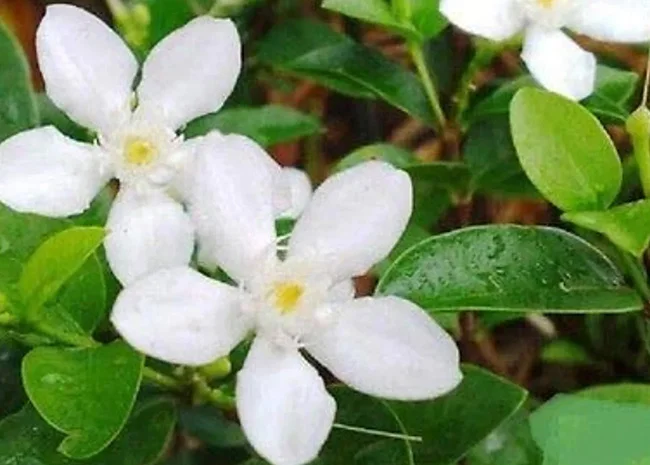
By Lynn Ockersz
You may call it a pilgrimage,
This yearly trudge she undertakes,
A posy of dainty flowers in hand,
To a rock-pile on a secluded hill,
Reeking of the graveyard’s silence,
Which covers her son’s remains,
Whom they bound and whisked away,
With dozens of other angry young men,
To a high place where elders say,
They were made to dig their graves,
At the point of smoking Ak-47 guns,
But all that scores of mothers such as her,
Have earned for their long nights of pain,
Are yellowing number tags for the missing,
Issued within stone walls of official silence.
-

 News5 days ago
News5 days agoCommercial High Court orders AASSL to pay Rs 176 mn for unilateral termination of contract
-
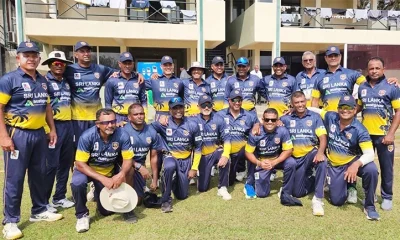
 Sports4 days ago
Sports4 days agoSri Lanka face Australia in Masters World Cup semi-final today
-
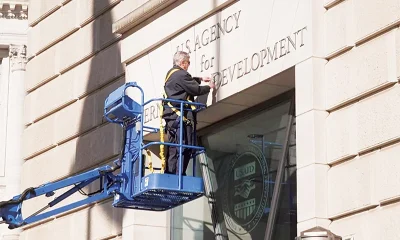
 Features6 days ago
Features6 days agoUSAID and NGOS under siege
-
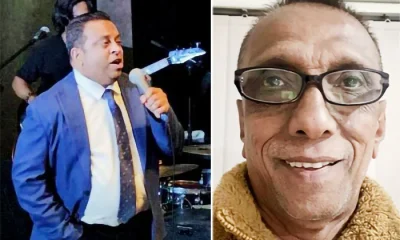
 Features6 days ago
Features6 days agoDoing it in the Philippines…
-

 Midweek Review5 days ago
Midweek Review5 days agoImpact of US policy shift on Sri Lanka
-

 News4 days ago
News4 days agoCourtroom shooting: Police admit serious security lapses
-
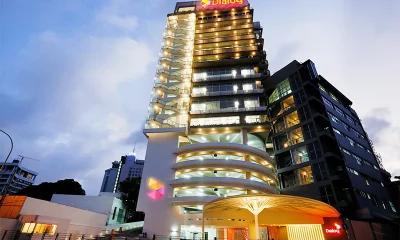
 Business6 days ago
Business6 days agoDialog delivers strong FY 2024 performance with 10% Core Revenue Growth
-
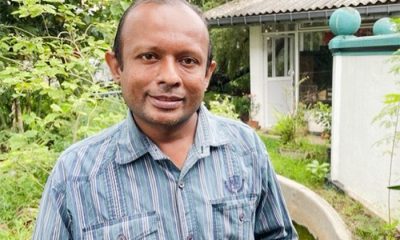
 News5 days ago
News5 days agoFSP lambasts Budget as extension of IMF austerity agenda at the expense of people











